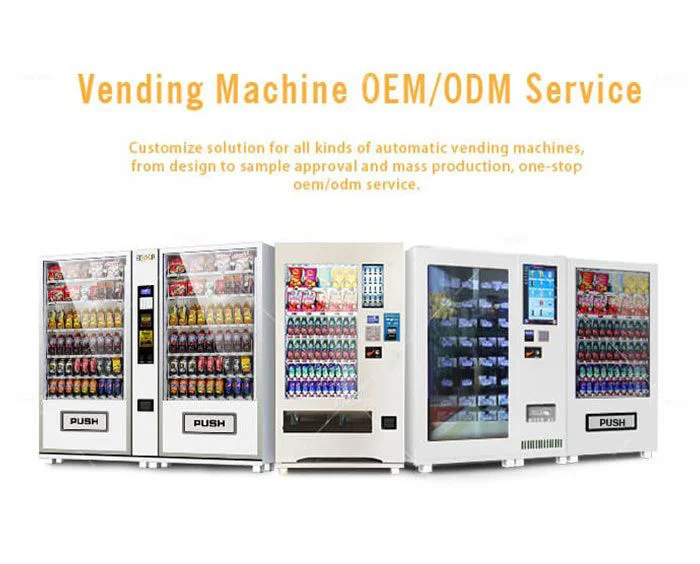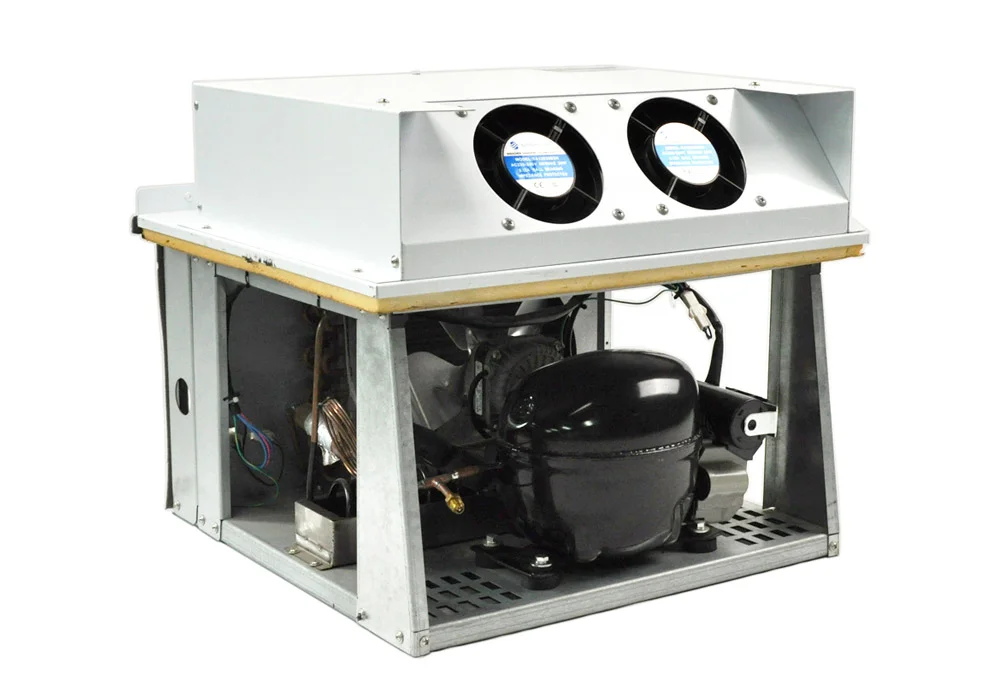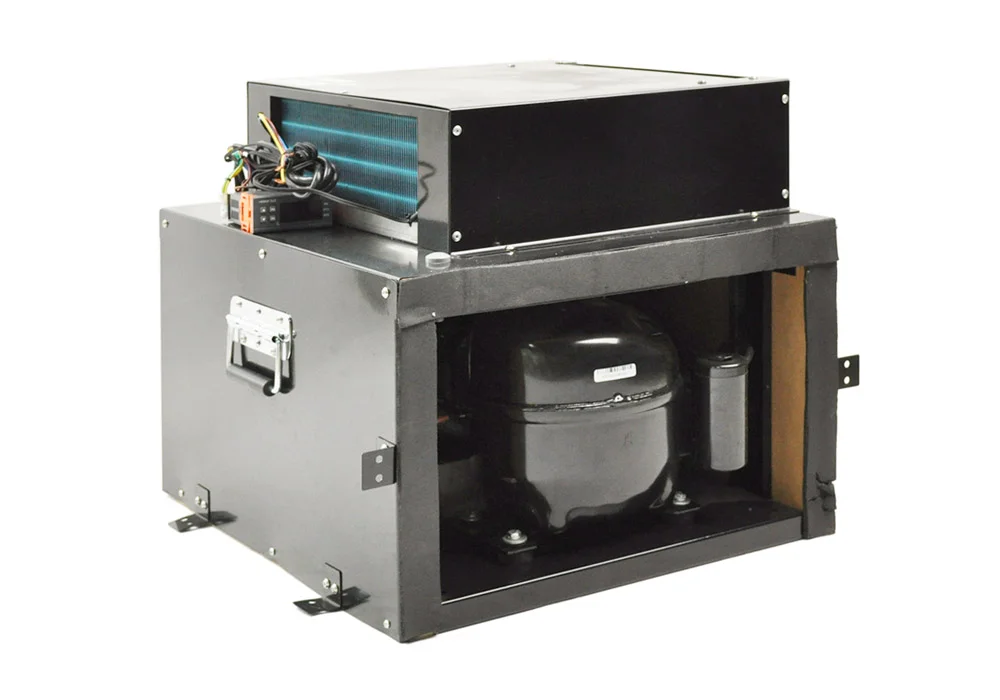Vending Machine
 Vending machines are devices that can automatically dispense goods according to the coins inserted. Vending machines are commonly used equipment in commercial automation. They are not restricted by time or location, can save labor and facilitate transactions. It is a new form of commercial retail, and is also known as a 24 - hour mini - supermarket. Commonly, vending machines are divided into four types: beverage vending machines, food vending machines, comprehensive vending machines, and cosmetic vending machines.
Vending machines are devices that can automatically dispense goods according to the coins inserted. Vending machines are commonly used equipment in commercial automation. They are not restricted by time or location, can save labor and facilitate transactions. It is a new form of commercial retail, and is also known as a 24 - hour mini - supermarket. Commonly, vending machines are divided into four types: beverage vending machines, food vending machines, comprehensive vending machines, and cosmetic vending machines.
The working principle of vending machines
There is a button under each item of goods. The goods we see are actually samples. The goods we buy are not these samples, but are stored in the warehouse inside the vending machine. When we press the button, the warehouse door corresponding to this item of goods will open, and then we can get the goods we want! A vending machine is an electromechanical integrated automated device. On the premise that the currency has been input, it relies on the touch - controlled button to input signals, enabling the controller to start the mechanical devices at relevant positions to complete the specified actions and output the goods.
① Users insert currency into the coin - slot, and the currency recognizer identifies the inserted currency.
② The controller provides the sellable information of the goods to the users through the indicator lights of the product - selection buttons according to the amount of money, and the users independently select the goods they want to buy.
③ When the user presses the button corresponding to the selected product, the controller receives the information transmitted by the button, drives the corresponding components, and sells the selected product to the pick - up port.
④ If there is enough balance, the user can continue to buy. Within 15 seconds, the vending machine will automatically give change, or the user can rotate the coin - return knob to get the change.
⑤ Take the change from the coin - return port to complete the transaction. The core technology is as follows: The Programmable Logic Controller (PLC) is an industrial control device with a microprocessor as its core. It combines the traditional relay control system with computer technology, and has the characteristics of high reliability, flexibility, versatility, easy programming, and convenient use. Therefore, in recent years, it has been widely applied in industrial automatic control, mechatronics, and the transformation of traditional industries.
The development history of vending machines
- 1st century AD: Hero, a Greek, made a device that automatically sold holy water. This was the world's first vending machine.
- 17th century: Cigarette vending machines were installed in small pubs in the UK.
- 1904: Japan's first vending machine, the "stamp - postcard vending machine", came out.
- 1925: The United States developed a cigarette - selling vending machine. Subsequently, various modern vending machines for selling stamps, tickets, etc. emerged.
- 1970s: New vending machines controlled by micro - computers and unmanned vending systems that used credit cards instead of coins and were connected to computers appeared.
Development Prospect
The vending coffee machine is a kind of automatic coffee and beverage vending machine that can dispense both hot and cold coffee, as well as milk tea and fruit juice beverages at the same time. It is time-saving, convenient and fast. It can be used as an investment and also as an employee benefit.
Judging from the development trend of vending machines, their emergence is a product of the transformation from a labor-intensive industrial structure to a technology-intensive society. Mass production, mass consumption, and changes in consumption patterns and sales environments have called for the emergence of new distribution channels. With the emergence of new distribution channels such as supermarkets and department store shopping centers, labor costs have been continuously rising. Coupled with the limitations of the venue and the convenience of shopping and other factors, unmanned vending machines have emerged as a necessary machine.
Broadly speaking, a machine that can sell goods after inserting coins, banknotes, credit cards, etc. is, in a narrow sense, a machine that automatically sells goods. From the perspective of supply conditions, vending machines can fully compensate for the shortage of human resources, adapt to changes in the consumption environment and consumption patterns. The 24-hour unmanned vending system can save more labor, requires less capital and occupies a smaller area during operation. It has the inherent property of attracting people's curiosity to make purchases, and can effectively solve the problem of rising labor costs and other advantages.
Since the 1980s, vending machines have entered a stage of rapid development and have currently been popularized in nearly 50 countries and regions around the world. The types of goods it sells have gradually expanded from the initial single products like chewing gum and beverages to daily fields such as fast food, newspapers, and personal care products. It has even derived service functions such as ticket purchasing and self-service payment. Through 24-hour uninterrupted operation, this kind of equipment effectively fills the time blind spots of traditional retail. Whether consumers urgently need a cup of coffee in the early morning or a simple meal late at night, they can obtain the products immediately.
The iterative update of technology has further promoted the innovation of vending machines. Modern models generally support intelligent interaction methods such as mobile payment and face recognition. Some devices are also equipped with an intelligent recommendation system, which can dynamically adjust the product combination according to the season, time period or user preferences. This self-service mode not only greatly reduces labor and time costs, but also reconstructs the service logic of urban life. Transactions that used to rely on manual counters can now be achieved through standardized and discrete automatic terminals. From obtaining goods to the service experience, vending machines are continuously reshaping the consumption landscape of modern society.
Currently, the total value of goods sold globally through vending machines each year is already close to 200 billion US dollars. Vending machines have indeed achieved remarkable development in the United States, Japan, and Europe. Nowadays, there are 7 million vending machines in the United States, with an average of one vending machine for every 40 people. In Japan, there are nearly 6 million vending machines, with an average of one vending machine for every 23 people.
The concept of "everything can be sold" by vending machines has been taken to the extreme in Japan. In a country like Japan where even rice can be purchased from a vending machine, vending machines selling eggs, vegetables, or fruits are really nothing new. Even the sales volume of the best-selling beverage Coca-Cola through vending machines in Japan can account for more than 70% of the company's annual production. In recent years, the Japanese have even placed all imaginable products such as breakfast, flowers, toys, and even CDs in vending machines. The appearance of vending machines has also bid farewell to the square and regular shape and has been made into the appearance of Ultraman, Hello Kitty, and other forms with their own national cultural characteristics.
The vending machine industry is moving towards informatization and further achieving rationalization. For example, in an online connection mode, the inventory information in the vending machine is transmitted in a timely manner to the computers of each business point through telephone lines, ensuring the smooth progress of commodity delivery, replenishment, and commodity selection. Moreover, in order to prevent global warming, the development of vending machines is committed to energy conservation, and energy-saving vending machines for refreshing beverages have become the mainstream in the industry. During the peak period of electricity consumption in summer, this type of vending machine can maintain a low temperature even when the cooler is turned off. Compared with the previous vending machines, it can save 10-15% of electricity. Entering the 21st century, vending machines will further develop in the direction of resource and energy conservation and high functionality.
Automation is the development trend of the future, whether in the manufacturing industry, service industry or retail industry. We will see more equipment replacing manual labor. Under such a general trend, the prospect of the vending machine industry is promising.
- Growth Trend of the Global Industrial Vending Machine Market Size
The global market size of industrial vending machines is expected to increase from 19.88 billion yuan (RMB) in 2023 to 34.415 billion yuan in 2029, with a compound annual growth rate of 9.58%.
The Refrigeration of Vending Machines
Vending machines are normally automatically offer various drinks, snacks and other products.
The cooling systems for refrigerated vending machines that can maintain temperature between 1°C to 3°C. Now most of cooling systems use environmentally friendly refrigerants, such as R290 and R134A.
HAIDING offers cooling system with cooling capacity range from 750W to 900W (rated 1/2 HP to 1HP), equipped with SECOP or Embraco compressor, HAIDING’s cooling system featured low noise and vibration, high efficiency and reliability, its special designed compact size perfectly suitable for limited space of vending machines.
VCU series Vending Machine Cooling Unit
The VCU series commercial condensing units are designed forvending machines (snacks, beverages and ice cream), as well asfor display cases and walk-in coolers.The VCU has two versions for top or bottom installation. Itscompact modular design means easy maintenance andcomponents replacement.
| Model | Nominal Capacity |
Cooling Capacity |
Application Temp. |
Refrigerant | Recommended Vending Machine Volume |
Cooling Capacity @ Evaporating Temperature | |||||
| -35 °C | -30 °C | -20 °C | -10 °C | 0 °C | +5 °C | ||||||
| VCU-01M | 1/2HP | 794W | +2°C to+8°C | R134a | 800-1000L | - | - | 382W | 632 W | 965W | 1165W |
| VCU-01L | 1HP | 903W | -23°C to -15°C | R404A | 800-1000L | 488W | 644W | 1052W | 1110W | - | - |
| VCU-05M | 1/2HP | 788W | +2°C to+8°C | R134a | 1000-1200L | - | - | 480W | 765W | 1187W | - |
-
Bottom Installation
① Equipped with Secop / Embraco compressor, high qualitycomponents for maximum efficiency and reliability
② Plug-In installation for fast assemby and space optimization
③ Evaporator is auto-defrost; stainless steel plate and frame,automatically collect condensate water VCU seriesbottom installation Compact modular design, bottom installation, easy maintenance
VCU seriesbottom installation Compact modular design, bottom installation, easy maintenance Secop/Embraco
Secop/Embraco
compressor Compact modular design, bottom installation, easy maintenance -
Top Installation
① Equipped with Secop / Embraco compressor, high qualitycomponents for maximum efficiency and reliability
② Plug-In installation for fast assembly and space optimization
Evaporator is auto-defrost; stainless steel plate and frame,automatically collect condensate water
③ Top installation makes cooled air sink smoothly Secop/Embraco
Secop/Embraco
compressor Top installation makes cooled air sink smoothly
FAQs
- Coffee Vending Machines
- Drink Vending Machines
- Snack Vending Machines
- Combo Vending Machines
- Frozen Vending Machines
- Smart Vending Machines
- Fresh Food Vending Machines
- Cooked Food Vending Machines
- Merchandise Vending Machines
- Healthy Vending Machines
- Prepared Meal Vending Machines
- Customised Vending Machines
- Media Vending Machines
- Hospitals or healthcare facilities
- Indoor or outdoor shopping malls
- Schools and universities
- Gyms and fitness centers
- Apartment buildings
- Laundromats
- Hotels or lodging areas
- Office buildings
- Entryways and Exits
- Snack or break areas
- Nearby lines or queues
- Waiting areas
Reviews
